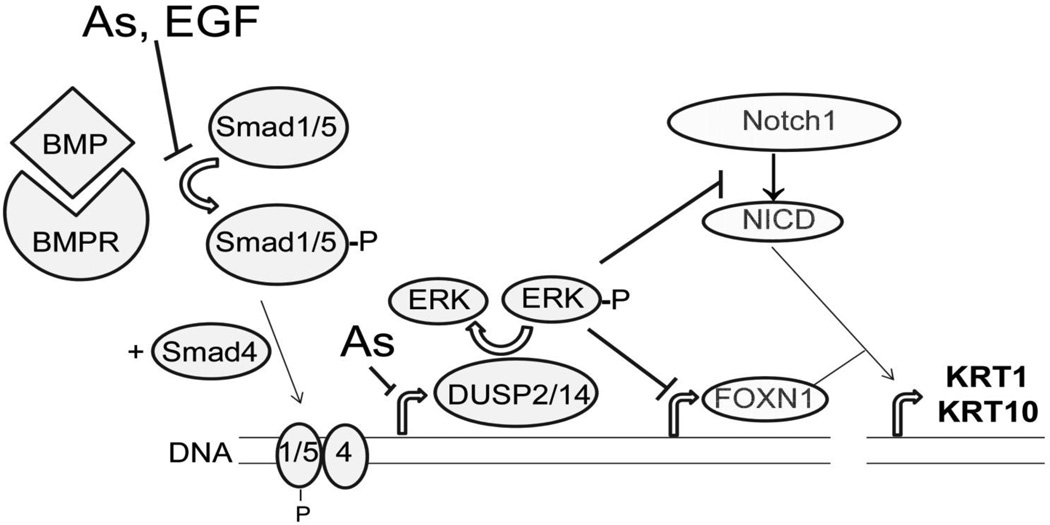Fig 11.
Signaling pathway and proposed sites of arsenite perturbation. Illustrated is the phosphorylation of Smad1/5 by the liganded BMP receptor, a phenomenon partially suppressed by arsenite (As) and EGF. The resulting induction of DUSP2 and DUSP14 (the latter possibly indirect) by Smad transcription factors is also shown as a site of arsenite intervention. Arsenite inhibition of DUSP dephosphorylation of ERK is possible but was not tested. Active ERK (phosphorylated) suppresses FOXN1 mRNA levels and Notch1 activation. The latter may occur at least in part by reduced FOXN1 binding to response elements reported in the upstream promoter region of Notch1 (Cai et al., 2009), not shown for simplicity. It is not known whether FOXN1 and activated Notch1 (NICD) bind directly to keratin gene promoters or instead regulate the expression of other factors affecting keratin gene transcription.

